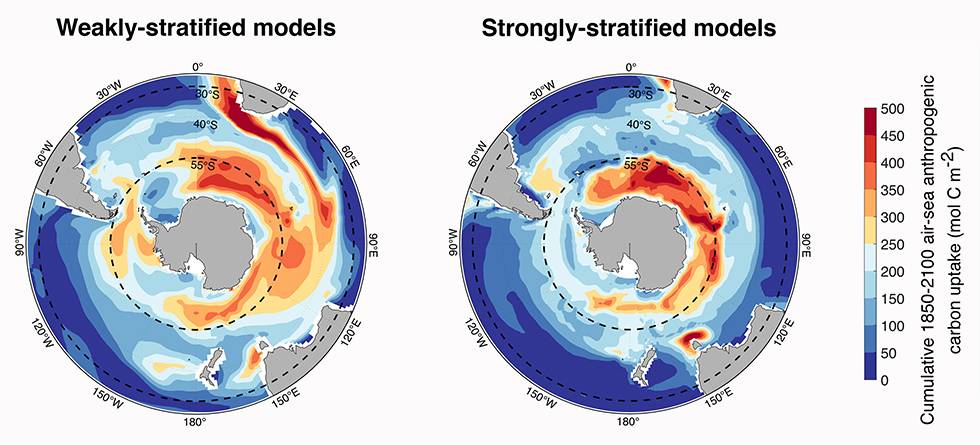Written by Timothée Bourgeois and Andreas R. Graven, first published by NORCE.
This climate model projections study is conducted by researchers from NORCE Norwegian Research Centre, and the Bjerknes Centre for Climate Research in Bergen, Norway.
The Ocean is a powerful mitigator of climate change. It absorbs about 25 percent of the CO2 emitted by humans into the atmosphere (anthropogenic carbon) and 90 percent of the excess heat caused by global warming.
One of the hotspots of anthropogenic carbon and excess heat uptake is the Southern Ocean.
In this region, a key mechanism called “ocean subduction”, particularly located between 30°S and 55°S, permits to efficiently transfer anthropogenic carbon and excess heat from the surface to the depths of the ocean, where it can be stored for centuries.
Climate model projections of these carbon and heat sinks remain highly uncertain. Reducing such uncertainties is required to effectively guide the development of climate mitigation policies for meeting ambitious climate targets.
"Climate models have significantly improved on many aspects during the last decades, yet they still show some biases that we must reduce", says lead author Timothée Bourgeois.
Models with a more unstable water column have an efficient subduction mechanism and a strengthened carbon and heat uptake in our region of interest, lead author Bourgeois and his colleagues Nadine Goris, Jörg Schwinger, and Jerry F. Tjiputra point out. On the contrary, models with a stable or “stratified” water column show reduced subduction and reduced uptakes.
Using a powerful and recent statistical methodology as well as observational data describing today’s water-column stability, the new relationship reduces the uncertainty of future estimates of the anthropogenic carbon uptake by up to 53 percent, and the excess heat uptake by 28 percent.
These results highlight that, for this region, an improved representation of the water-column stability in climate models is key to improving climate change projections.
Reference
Bourgeois, T., Goris, N., Schwinger, J. and Tjiputra, J. F. (2022), Stratification constrains future heat and carbon uptake in the Southern Ocean between 30°S and 55°S. Nat. Commun. 13, 340, 2022.

